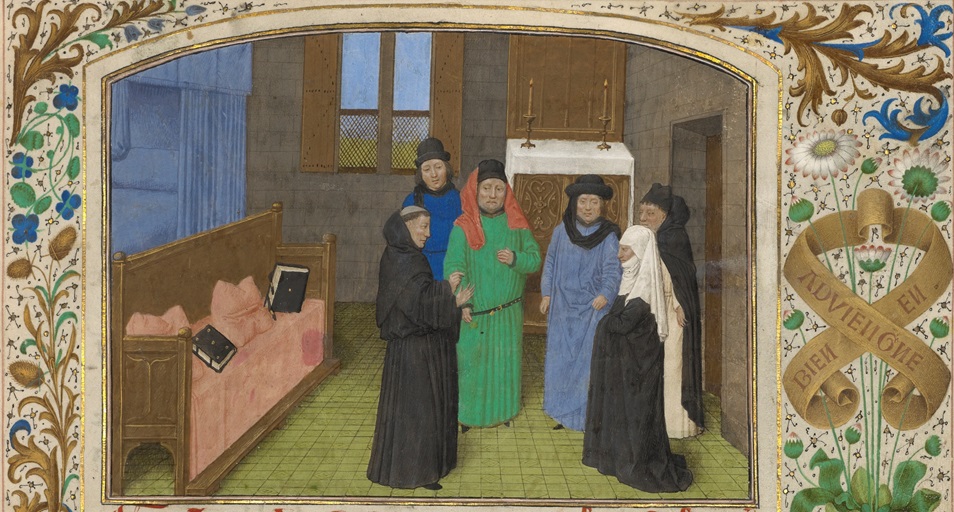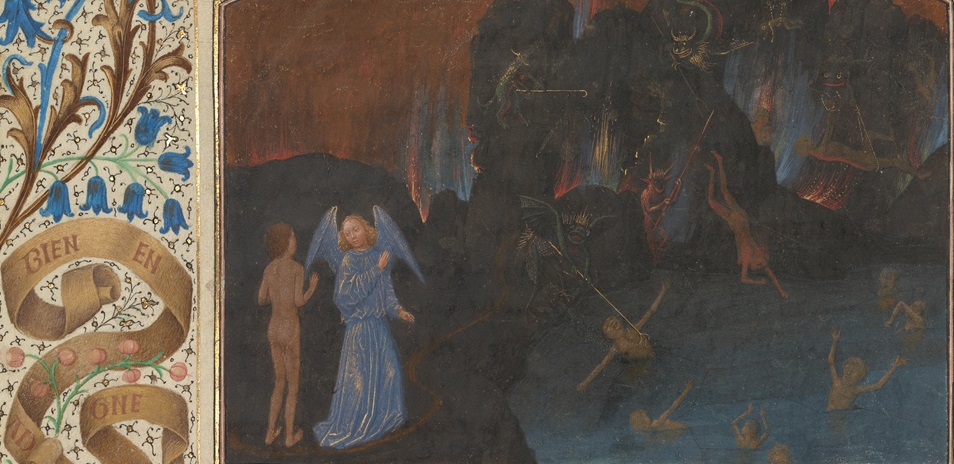
A Monk and Guy’s Widow Conversing with the Soul of Guy de Thurno (detail) in The Vision of the Soul of Guy de Thurno, Simon Marmion, 1475. The J. Paul Getty Museum, Ms. 31, fol. 7
This unusual manuscript stars a ghost—invisible to both the reader and the viewer.
There once lived a man called Guy de Thurno, who was a most honorable and wealthy citizen from the town of Verona in northern Italy. Upon Guy’s death, his soul began to appear nightly in the bedchamber of his former home. His wife became frightened when she heard whispers and utterances in the tone and cadence of her deceased husband. She became so troubled that she called upon Benedictine monks to mediate between the living and the dead. A series of conversations ensued about the state of Guy’s soul—specifically, about how a man who was so noble in life could have merited a stay in purgatory, and moreover how his soul’s presence could torment and haunt his forlorn wife.
The illuminated miniature above shows the scene: a gathering of men, including Benedictine monks at left and right, as well as Guy’s wife, who wears a black gown and white cowl. The group encircles the ghost of Guy de Turno, and the gesture of the monk at left informs us that a conversation is taking place. This medieval ghost story focuses primarily on the soul’s journey in the afterlife and discusses the Church doctrine of purgatory. Wondering where the ghost is? He’s entirely invisible, indicated by an empty space on the floor in the missing circle.
By modern standards, the events recounted in The Vision of the Soul of Guy de Thurno would hardly muster up terror or suspense. Yet, in the Middle Ages, being stuck in the unsavory realms of the afterlife was a horrifying prospect indeed. This particular manuscript was once bound together with another harrowing story, The Visions of the Knight Tondal, which tells of a wealthy Irish knight whose soul embarks on a journey through Hell and Paradise. The images accompanying Tondal’s voyage into the depths of Hell certainly resonate with the macabre, hair-raising, gruesome, supernatural, and bloodcurdling visuals that abound in the days and weeks leading up to and on the night of October 31.

The Torment of Unbelievers and Heretics (detail) in The Visions of the Knight Tondal, about 1470, Simon Marmion. The J. Paul Getty Museum, Ms. 30, fol. 14v




Comments on this post are now closed.